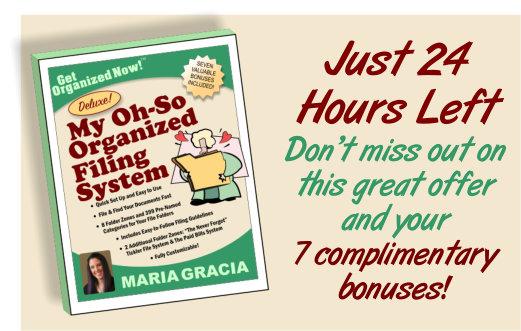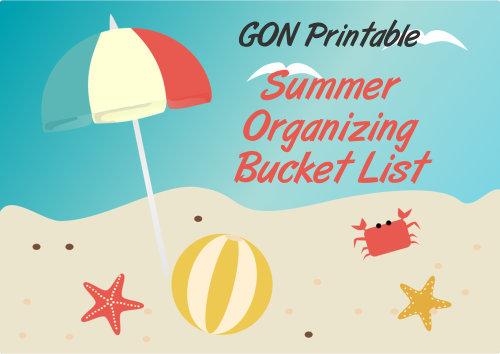GON Reader Question
Hi Maria,
I absolutely love your newsletter. I have a question that I haven't seen addressed yet. I'm hoping you can guide me a bit. Is there a way to integrate my home paper filing system with my digital lifestyle? Any assistance would be appreciated.
-- Eric from Los Angeles, CA
Maria Gracia Responds
Hi Eric,
Thank you for this wonderful question. I'd love to address it.
In the digital age we're living in, finding a way to blend our traditional paper home filing system with the convenience of a paperless lifestyle is key. You can definitely combine the strengths of physical and digital organization, striking a perfect balance between the tangible and the virtual. Let's dive into some tips to do this.
1. Embrace the Hybrid Approach: First things first, determine which documents are better off as physical copies and which ones can be digitized.
Important legal papers, original certificates, and sentimental records are not only safer, but absolutely necessary, in their physical form.
That
being said, utility bills, financial statements, and other frequently accessed documents can be easily digitized to reduce clutter and make them more accessible.
2. Keep track of billing methods: When it comes to receiving bills, this is where things often get a bit hairy. Some bill
statements may be coming in the mail, some via email, some via text reminders, and others automatic payments.
I highly suggest you create a visual for yourself so you know what's coming
due...and when. A spreadsheet (Excel or Google Sheets) is a good tool to do this. Three columns should do the trick. List (1) your bills (electric, water, tuition, cable, etc.), (2) what day of the month they're due, and (3) how you get invoiced (snail mail, email, automatic, etc.)
Bills easily can get lost in the mail. An email bill may not arrive in your inbox, or it may land in your spam or promotions folder. A text message may get missed. And you may forget to deposit or transfer enough money into your checking account for an automatic payment...which can result in an insufficient funds penalty.
That's why having this spreadsheet at the ready is an excellent tool...you'll be able to see what's coming up ahead of time!
3. Find the Right Digital Tools: Invest in a good scanner or try out smartphone apps that let you easily convert physical documents into digital files. A few good options are Adobe Scan, CamScanner, or Microsoft Office Lens.
These nifty apps make scanning a breeze and even offer features like optical character recognition (OCR), making searching and indexing a snap.
4. Go Digital and Stay Organized: When you digitize your files, make sure to create a clear and consistent system for naming and organizing them. Use logical folder structures and descriptive file names to make finding documents a piece of cake.
If you can, try to mirror your digital organization with your physical filing system, making the transition between the two smooth as silk.
5. Backup and Security: Don't forget to back up your digital files. Take advantage of cloud storage services. I use Carbonate and really like it. Other reliable services are Dropbox and Google Drive. For extra security, consider encrypting sensitive documents and enabling two-factor authentication.
Regularly backing up your digital files will save you from potential disasters like tech glitches or hardware failures.
I run an automatic backup every single night (so I don't have to remember to do so manually), at 11:00 p.m. when I know I won't need to be on my computer...because the backup slows my computer speed down a bit.
6. Cherish Your Physical Files: Keep a dedicated space for important physical documents and maintain a consistent method of organization. Labeled folders and a trusty filing cabinet will keep those documents secure and within easy reach. 7. Stay on Top of Maintenance: Make it a habit to regularly review and declutter both your physical and digital files. Weed out
outdated or irrelevant documents from your physical files. Similarly, delete or archive digital files that you no longer need to keep things neat and tidy.
Integrating your home filing system with a digital or paperless lifestyle gives you the best of both worlds. It helps you reduce clutter,
improves accessibility, and ensures the safety of your important documents.
This is exactly where I'm at...the hybrid approach...embracing digital while also realizing the ongoing
necessity for paper files.
I hope this helps! Have a great day!












